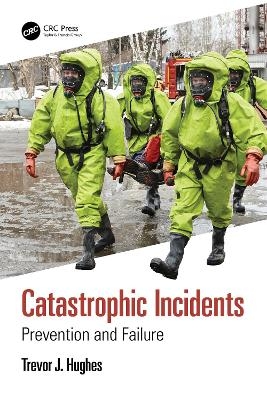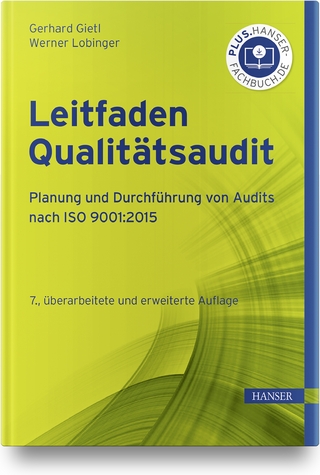
Catastrophic Incidents
CRC Press (Verlag)
978-1-032-41967-1 (ISBN)
This interesting book offers an analysis of man-made catastrophes and asks why they continue to occur. 87 catastrophes or near-catastrophes, including high profile cases such as the Bhopal gas disaster, Grenfell Tower, Shoreham Air Show crash, Brumadinho dam collapse and Fukushima Daiichi, are described together with the reasons why they occurred and why over 50 different safety management approaches and techniques failed to prevent them.
Featuring 63 eye opening stories from the author’s own personal experience and over 200 pitfalls in safety management approaches, this title is illustrated by 24 hypothetical cases in which the reader is asked to consider the approach they would take. Safety management techniques discussed include operating practices, personnel selection and emergency response. Safety management approaches including safety governance in organisations, along with the role of government and local authorities using the instruments of the law are extensively discussed. The work concludes with imaginative and creative ways forward with the aim to make considerable progress and to potentially eliminate man-made catastrophes for good.
This title will be an ideal read for safety managers and engineers, community leaders in civic duties or labour union roles and professionals tasked with stopping and mitigating the impacts of man-made catastrophes, along with non-technical readers who are curious and concerned.
Trevor John Hughes has 50 years of experience in the chemical and oil industries, working in various roles including process engineer, plant manager and site director. For 28 years he had direct supervisory and management responsibility for several manufacturing facilities in the U.K.. This was followed by 14 years as a consultant, primarily in process safety, working in offshore in the North Sea, and then on assignment in Russia, Kazakhstan, Ukraine and Saudi Arabia. For the last eight years he has worked primarily as an insurance risk engineer in Azerbaijan, Bahrain, Uzbekistan, Romania, most Western European countries and the U.S.A. He has graduate and post-graduate qualifications in both Chemical Engineering, and Health and Safety Management. Trevor has had a lifelong interest in the concept of risk. Currently he is an active Professional Process Safety Engineer.
1. Introduction 2. Man Made Catastrophes and Safety Risk 3. What makes risk tolerable or intolerable 4. Fundamental Concepts, Protection Barriers, and Risk Exposure Consequences 5. High Risk Technologies – Introduction 6. Oil and Gas 7. Chemical Industry 8. Mining and Mine Waste 9. Transportation Industry 10. Nuclear Power Generation 11. Utilities – Other 12. Agricultural, Forestry and Wood Processing, Food and Beverages 13. Process Industry Infrastructure 14. Metallurgical and Other Large-Scale industry 15. Civil Infrastructure, Small Industrial Estates, Residential 16. Explosives manufacture, Military and Defence Establishments 17. New and Emerging Technologies 18. Introduction 19. Operators and Front-Line Personnel 20. Human Factors 21. Equipment Suitability and Reliability 22. Equipment Maintenance and Inspection 23. Emergency Response and Readiness 24. The Role of the Safety Department, and Incident Investigation 25. Risk Assessment Basics and Preparation 26. Risk Assessment Techniques – HAZOP, Fault Tree, Event Tree and Other Methods 27. Risk Assessment Outcomes, Layers of Protection Analysis and Safety Integrity Levels 28. Consequence Analysis and Consequence Mitigation 29. Software Safety and Cyber Security 30. Risk Assessment Conclusions and Risk Reduction 31. Governance of Safety 32. Laws, Regulations, Standards 33. Safety Culture and Other Social Structures 34. Managing legacy issues 35. Introduction 36. Hurricane, Tornado and Flood 37. Earthquake 38. Tsunami and other natural catastrophes 39. Diseases 40. Terrorism, Sabotage and War 41. Preventing Catastrophes - Is there a need for change? 42. Improvements to Risk Management Methodology 43. Changes to Leadership Mind Set 44. Changes to Government and Legal Structures 45. Societal changes including Education 46. Common Factors with Other 'Catastrophes' such as Climate Change 47. In genuine pursuit of high reliability organisations 48. Conclusions
| Erscheinungsdatum | 15.02.2023 |
|---|---|
| Zusatzinfo | 72 Tables, black and white; 48 Line drawings, black and white; 16 Halftones, black and white; 64 Illustrations, black and white |
| Verlagsort | London |
| Sprache | englisch |
| Maße | 156 x 234 mm |
| Gewicht | 1079 g |
| Themenwelt | Technik |
| Wirtschaft ► Betriebswirtschaft / Management ► Logistik / Produktion | |
| ISBN-10 | 1-032-41967-9 / 1032419679 |
| ISBN-13 | 978-1-032-41967-1 / 9781032419671 |
| Zustand | Neuware |
| Informationen gemäß Produktsicherheitsverordnung (GPSR) | |
| Haben Sie eine Frage zum Produkt? |
aus dem Bereich


